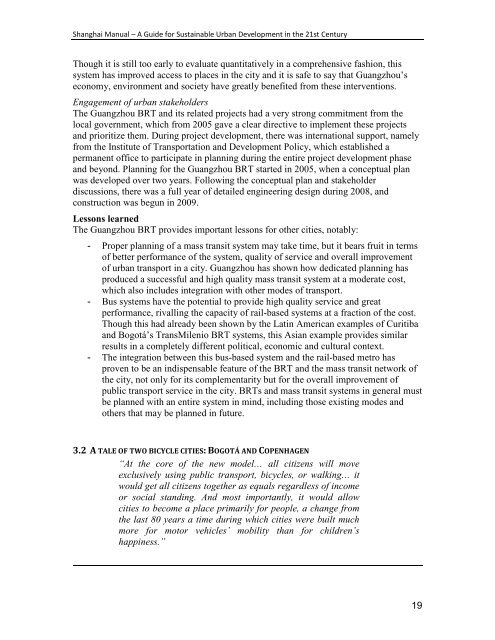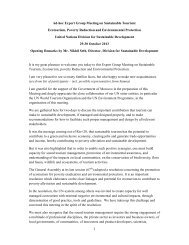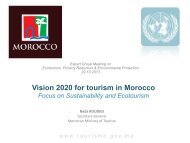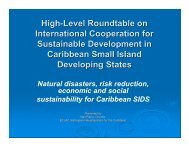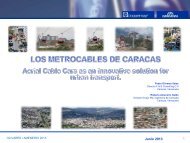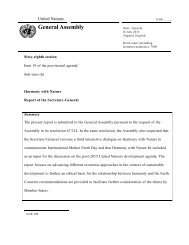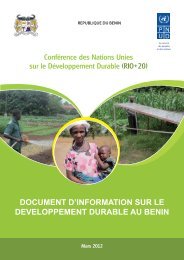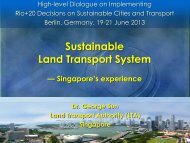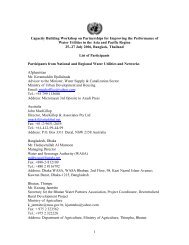A Guide for Sustainable Urban Development of the 21st Century
A Guide for Sustainable Urban Development of the 21st Century
A Guide for Sustainable Urban Development of the 21st Century
You also want an ePaper? Increase the reach of your titles
YUMPU automatically turns print PDFs into web optimized ePapers that Google loves.
Shanghai Manual – A <strong>Guide</strong> <strong>for</strong> <strong>Sustainable</strong> <strong>Urban</strong> <strong>Development</strong> in <strong>the</strong> <strong>21st</strong> <strong>Century</strong>Though it is still too early to evaluate quantitatively in a comprehensive fashion, thissystem has improved access to places in <strong>the</strong> city and it is safe to say that Guangzhou’seconomy, environment and society have greatly benefited from <strong>the</strong>se interventions.Engagement <strong>of</strong> urban stakeholdersThe Guangzhou BRT and its related projects had a very strong commitment from <strong>the</strong>local government, which from 2005 gave a clear directive to implement <strong>the</strong>se projectsand prioritize <strong>the</strong>m. During project development, <strong>the</strong>re was international support, namelyfrom <strong>the</strong> Institute <strong>of</strong> Transportation and <strong>Development</strong> Policy, which established apermanent <strong>of</strong>fice to participate in planning during <strong>the</strong> entire project development phaseand beyond. Planning <strong>for</strong> <strong>the</strong> Guangzhou BRT started in 2005, when a conceptual planwas developed over two years. Following <strong>the</strong> conceptual plan and stakeholderdiscussions, <strong>the</strong>re was a full year <strong>of</strong> detailed engineering design during 2008, andconstruction was begun in 2009.Lessons learnedThe Guangzhou BRT provides important lessons <strong>for</strong> o<strong>the</strong>r cities, notably:- Proper planning <strong>of</strong> a mass transit system may take time, but it bears fruit in terms<strong>of</strong> better per<strong>for</strong>mance <strong>of</strong> <strong>the</strong> system, quality <strong>of</strong> service and overall improvement<strong>of</strong> urban transport in a city. Guangzhou has shown how dedicated planning hasproduced a successful and high quality mass transit system at a moderate cost,which also includes integration with o<strong>the</strong>r modes <strong>of</strong> transport.- Bus systems have <strong>the</strong> potential to provide high quality service and greatper<strong>for</strong>mance, rivalling <strong>the</strong> capacity <strong>of</strong> rail-based systems at a fraction <strong>of</strong> <strong>the</strong> cost.Though this had already been shown by <strong>the</strong> Latin American examples <strong>of</strong> Curitibaand Bogotá’s TransMilenio BRT systems, this Asian example provides similarresults in a completely different political, economic and cultural context.- The integration between this bus-based system and <strong>the</strong> rail-based metro hasproven to be an indispensable feature <strong>of</strong> <strong>the</strong> BRT and <strong>the</strong> mass transit network <strong>of</strong><strong>the</strong> city, not only <strong>for</strong> its complementarity but <strong>for</strong> <strong>the</strong> overall improvement <strong>of</strong>public transport service in <strong>the</strong> city. BRTs and mass transit systems in general mustbe planned with an entire system in mind, including those existing modes ando<strong>the</strong>rs that may be planned in future.3.2 A TALE OF TWO BICYCLE CITIES: BOGOTÁ AND COPENHAGEN“At <strong>the</strong> core <strong>of</strong> <strong>the</strong> new model… all citizens will moveexclusively using public transport, bicycles, or walking… itwould get all citizens toge<strong>the</strong>r as equals regardless <strong>of</strong> incomeor social standing. And most importantly, it would allowcities to become a place primarily <strong>for</strong> people, a change from<strong>the</strong> last 80 years a time during which cities were built muchmore <strong>for</strong> motor vehicles’ mobility than <strong>for</strong> children’shappiness.”19


